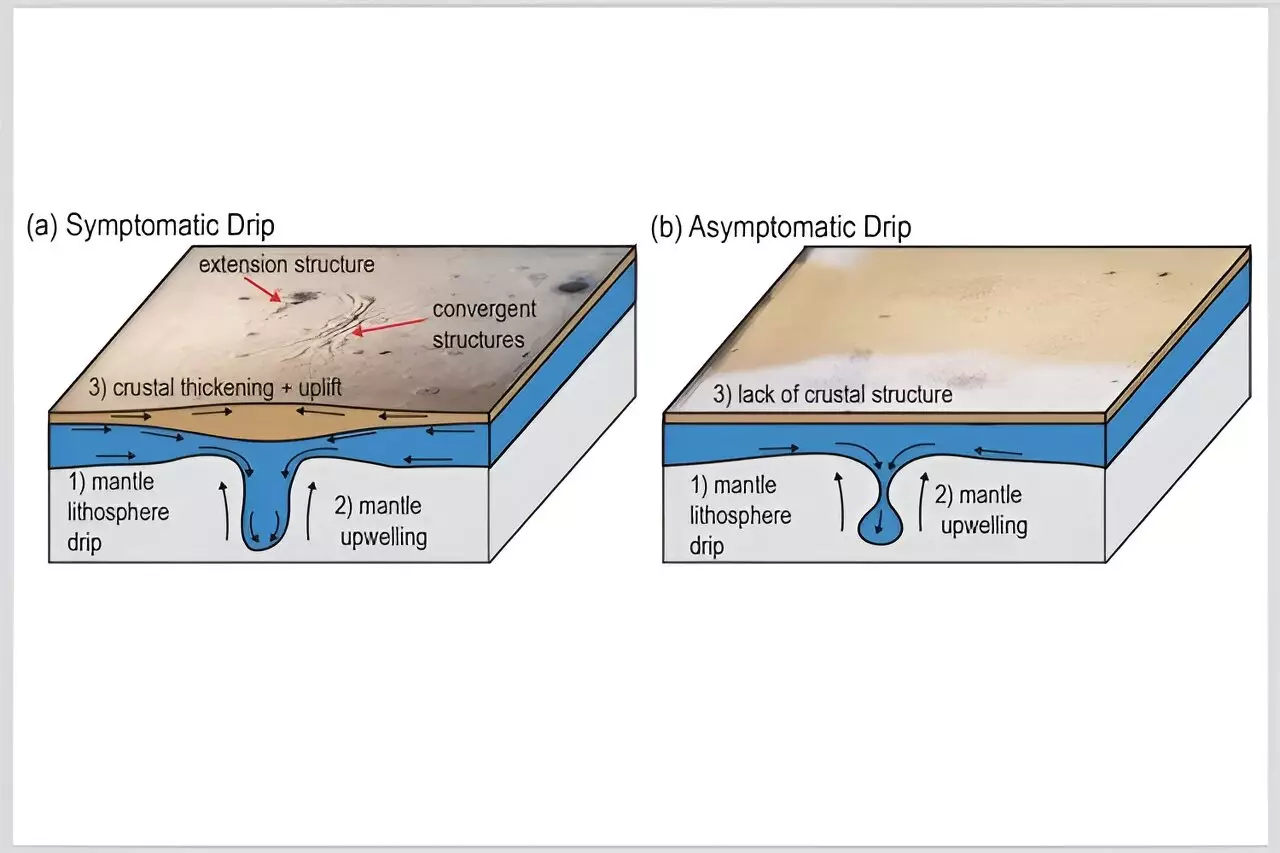The Konya Basin, located within the Central Anatolian Plateau of Türkiye, has emerged as a focal point of recent earth science research, offering profound insights into geological processes that shape our planet. A collaborative effort by a research team from the University of Toronto has unveiled the complex mechanisms that drive the basin’s continuous alteration over millions of years. This investigation, which combines satellite observations with innovative laboratory simulations, suggests a groundbreaking understanding of tectonic activity and its far-reaching implications, not only for Earth but potentially for other celestial bodies like Mars and Venus.
Research led by Julia Andersen, a Ph.D. candidate at the University of Toronto, reveals that the Konya Basin is undergoing a process of subsidence—an intriguing phenomenon where land sinks within a region that is simultaneously experiencing uplift. This twofold process raises a pivotal question: how can a basin deepen even as the surrounding geological landscape elevates? The team’s findings, recently published in *Nature Communications*, indicate that multi-stage lithospheric dripping is responsible for this paradox. This process involves dense, rocky materials within the Earth’s crust detaching and sinking into a more malleable mantle below, creating a unique interplay between rising plateaus and deepening basins.
Analyzing satellite imagery, the team discovered a distinct circular feature indicative of ongoing subsidence. Further geological assessments revealed additional seismic anomalies, leading to the hypothesis that high-density material beneath the surface is contributing to the basin’s dramatic transformation. This discovery highlights the necessity of integrating diverse geological tools to uncover the underlying processes that govern the physical characteristics of Earth’s surface.
The study of the Konya Basin is not an isolated endeavor; rather, it echoes earlier investigations into similar geological formations, such as the Arizaro Basin in the Andes. The researchers’ observations support the notion that lithospheric dripping is a universal process, applicable to various geological contexts around the world. Russell Pysklywec, a co-author of the study and professor in the Earth sciences department, underscores that the geographic variety of these occurrences challenges previously held conceptions about tectonic processes, suggesting a broader, more dynamic understanding of Earth’s geological phenomena.
Over the past 10 million years, the Central Anatolian Plateau has elevated by nearly one kilometer, a rise attributed in part to lithospheric dripping. This counterintuitive connection between subsidence and uplift illustrates that geological processes are often interconnected and multifaceted. The continual interplay between descending mantle material and surface uplift has profound implications for our understanding of tectonic evolution and landscape formation.
The research team’s methodology incorporated versatile experimental techniques that allowed for an examination of these geological processes in a controlled setting. Utilizing a plexiglass tank equipped with specialized materials mimicking Earth’s mantle and crust, the team successfully replicated the dripping phenomenon. By introducing a high-density substance into this model, the researchers were able to observe the dynamics of what they termed the “primary drip” and its subsequent secondary counterpart.
What distinguishes this study is the observation that both dripping stages led to surface changes, such as basin formation, without any accompanying horizontal deformation of the crust. This revelation aligns with the researchers’ expectations about how mantle lithospheric dripping typically interacts with crustal layers. Andersen noted that even a smaller secondary drip provoked significant downward movement, further substantiating the intricate balance between varying geological forces at play.
The concepts and findings surrounding the Konya Basin extend beyond earthbound implications, opening doors to understanding geological processes on other planets. The research suggests that planets lacking Earth-like tectonic structures—such as those found on Mars and Venus—may still experience similar phenomena, potentially reshaping our models of planetary geology. This line of inquiry could prompt further exploration of other celestial bodies for signs of tectonic activity or geological evolution, potentially influencing future missions and research objectives in planetary science.
The investigation into the Konya Basin elucidates the complex, dynamic interactions that characterize Earth’s geological systems. Current findings not only reshape our understanding of subsidence and uplift on our planet but also pave the way for broader discussions regarding planetary analysis beyond Earth. As research in this field continues, it becomes increasingly clear that the processes shaping our landscapes are as intricate and multifaceted as the environment itself.


Leave a Reply